How to grow petunia at home, features and rules for caring for seedlings

Delicate and lush petunia bushes have long and firmly won the hearts of gardeners. However, in order for the plant to grow healthy and strong, it is important to know how to grow petunia at home and how to care for it.
Content:
- How to grow petunia at home from seeds
- How to grow petunia seedlings for sale
- Growing seedlings in tablets and cassettes
- Petunia growing technology: how to sow, when to open after germination
- Organization of watering, lighting, picking
- Ampelous petunia: how to grow seedlings, plant characteristics
- How to grow lush petunia: rules for plant formation
How to grow petunia at home from seeds
The key to a large harvest and healthy plants is to buy quality seeds. That is why online shopping should only be used as a last resort.
Ideally, it is recommended to purchase seeds from trusted sellers or friends.
Since the seeds are quite small, they are often sold in the form of pills in stores. However, in this case, it is important to consider that if there is a lack of moisture, the shell may not dissolve and the seeds may not germinate.
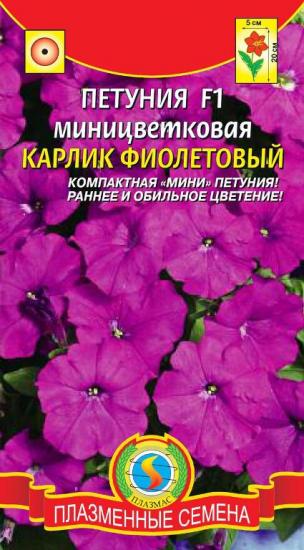
After the seeds have been purchased, you need to proceed to the next step:
- Disinfect shallow, up to ten centimeters, containers for seedlings. Fill the bottom with expanded clay and fill 2/3 with substrate.You can purchase it at a specialized store or prepare it yourself by mixing humus, lowland peat and a little sand in equal proportions;
- Pour boiling water over the substrate before planting the seeds, ideally additionally treating it with a light solution of potassium permanganate;
- Since the seeds are very small, it is better to plant them with tweezers or a toothpick, laying them on top of the soil, without sprinkling them. If the seeds are coated, spray them with water after laying out. It is important to spray, and not water, so that the seeds do not sink too deep into the soil;
- Cover the container with glass or polyethylene to create a greenhouse effect. At the same time, it is important to prevent excess condensation from accumulating on the film by turning it over daily;
- After the seeds germinate, they need to begin to be ventilated. The first shoots should be expected on the third or fourth day.
- Gradually adapting the sprouts to new conditions, they will soon be able to be transplanted. Strong seedlings can be kept both in an apartment and in open ground.
We invite you to watch an interesting video about this. how to grow petunia at home:
How to grow petunia seedlings for sale
In the case of growing seedlings for sale, it is important to plant the seedlings in containers at the stage of two or three permanent leaves. You can use simple disposable cups as containers.
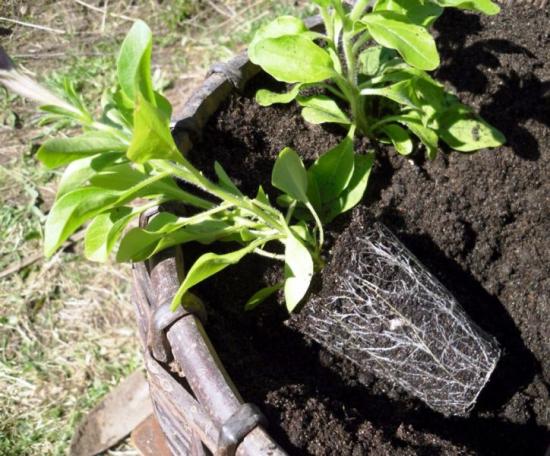
After the seedlings sprout and are planted in pots, it is important:
- After planting, systematically check the soil moisture and, if necessary, water each seedling using a syringe at the root. Drying out the soil can lead to yellowing of the leaves or complete death;
- In the second or third week after transplanting into separate containers, it is recommended to fertilize with nitrogen fertilizers. After enough greenery appears on the sprouts, it is recommended to apply phosphate-potassium fertilizers to activate flowering;
- In order for the seedlings to grow strong, it is important to carry out systematic pinning after planting. To do this, it is necessary to expose the seedlings to short-term exposure to temperatures of +10 - +15? C. At first, ten minutes of pinning is enough; gradually it is recommended to increase the time the flower spends in such conditions, preparing it for constant living conditions in open ground;
- To add lush greenery and flowering, it is recommended to pinch at the level of the fourth or fifth leaves. This will make the bush more lush and flowering more frequent.
Seedlings prepared in this way will not only look good, but will also delight you with quality. This will help you gain credibility among buyers.
Growing seedlings in tablets and cassettes
If you purchase pelleted seeds, it is recommended to purchase special peat tablets for germination. Medium-sized tablets of 3.5 - 4.5 cm are perfect.
To disembark you need:
- Immerse the tablet in water to soak it. Once the tablet has absorbed enough water, transfer it to a high-sided tray;
- Using an ordinary match, place one seed in each tablet. Pour the seeds from a pipette, allowing the shell to soak;
- After the shells are soaked, smear them with your fingers so that the seedlings germinate faster, then cover with polyethylene and place in a warm, well-lit place.
- When planting petunias using this method, their germination rate increases significantly. In addition, it is much easier to care for seedlings in tablets, since they do not need to be planted.
An equally convenient method is growing in cassettes, and since one cassette is suitable for reusable use, this method is also economical. By purchasing a cassette once, you can get rid of the problem of finding containers and the need for picking.
When buying a cassette, it is important to understand that the more cells it has, the smaller they will be. Optimal for growing petunias Cassettes of sufficiently large cell size with a side height of at least 10 centimeters are considered.
The cassette cells are filled with ready-made substrate or tablets. Caring for plants in this case is no different from caring for plants grown in a regular box.
Growing seedlings in tablets and cassettes has a number of advantages in both care and price. So, planting in tablets will help get rid of a number of problems, and cassettes are suitable for reusable use.
We invite you to watch an interesting video about growing petunia seedlings:
Petunia growing technology: how to sow, when to open after germination
Start landing petunias You can start seedlings as early as February. However, this can only be done if there is an additional light source, since in winter the daylight hours are short and the seedlings may suffer from lack of lighting.

To sow, you need to prepare a container with soil in advance and, after laying out the seeds, carefully spray with water. There is no need to sprinkle with substrate. The greenhouse conditions provided at this stage will significantly increase the likelihood of rapid germination.Depending on which growing method (tablets, cassettes, regular substrate) was chosen, the care and growing process may differ.
The time from sowing and a week after the first shoots are quite critical for young seedlings. The slightest temperature fluctuation, lack of moisture or heat can lead to their death, so it is important to act with extreme caution so as not to destroy the seedlings.
Immediately after the first shoots appear, it is important to begin ventilating the seedlings. This will help the sprouts get stronger and gradually adapt to open ground conditions, but this does not mean that you can immediately open the box and leave the seedlings like that. This is a sure way to destroy all the seedlings; it is important to prepare petunias for ventilation gradually.
Organization of watering, lighting, picking
When growing petunias, it is important to provide the most comfortable conditions for the flowers.
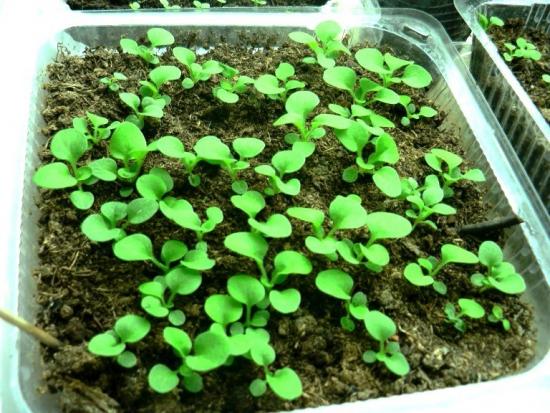
It is so important to pay attention to such nuances as:
- Light - seedlings can only be obtained if there is good lighting. In the first day after the formation of seedlings, lighting should be almost around the clock. For further normal growth, daylight hours should not be less than twelve hours. If cultivation occurs in winter, when daylight hours are short, fluorescent or LED lamps will come to the rescue. It is recommended to install the latter at a height of 20 cm above the sprouts;
- Watering - it is important to understand that an excess of moisture is just as destructive for any plant as its lack. Therefore, it is necessary to moisten the substrate as it dries. So in the first week after planting, it is enough to spray the soil several times a day with a weak solution of potassium permanganate.When seedlings form, it is recommended to reduce the frequency of watering to once a day. It is better to take water for irrigation that is settled and at room temperature. It is not recommended to pour the substrate; ideally, you need to water it using a pipette, along the inner walls of the tray or through a tray, pouring water into it;
- Picking - or planting seedlings in separate containers. It must be carried out no earlier than the formation of the second or third true leaf, which often occurs a month after planting. To carry out picking, it is recommended to prepare a container for each seedling, the diameter of which will be at least 7 cm. At the bottom of the new container there must be holes for draining excess water. It is recommended to replant using a small spoon, using an earthen lump, and the new container should already contain some fresh soil, ideally enriched with fertilizers. After picking, the seedling's cotyledons should be above the soil level.
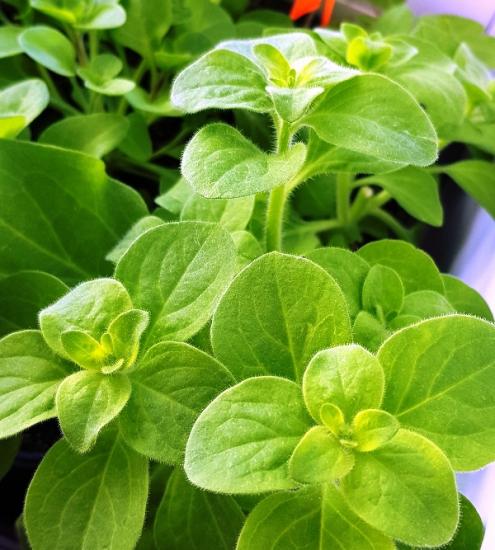
The last stage is required if planting was carried out in solid containers that were common to a large number of seedlings. If peat tablets or cassettes were used for planting, this stage can be skipped by moving the seedlings to new pots without removing them from the tablets.
Properly organized watering, lighting and picking are the key to growing a lush and strong plant. Therefore, each of these stages should be given enough time and effort.
Ampelous petunia: how to grow seedlings, plant characteristics
Ampelous petunia is a herbaceous perennial plant native to South America. The species includes a large number of varieties that are distinguished by long and lush flowering. The flowers can reach ten centimeters in diameter and are shaped like a funnel.
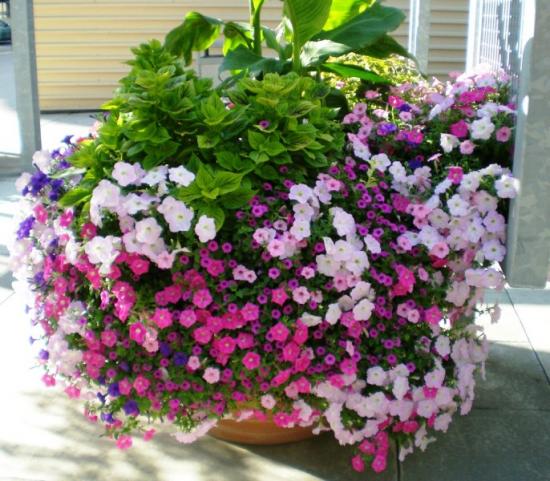
Different varieties may have ruffled, double, semi-double or single petals. The color ranges from snow-white to dark, with some species having a black tint.
Thanks to its long, flowing branches and lush flowering, this species has become widespread in landscape design and is often used in vertical gardening. Boxes, cups or tablets are used for sowing ampelous. Growing seedlings of this species is no different from growing any other type of these flowers.
Distinctive features appear only in an adult plant:
- The length of ampelous shoots ranges from 30 cm to a meter. As they grow, the branches begin to fall down rather than deviate to the sides. This is especially appreciated in design, since the plant can be given the desired shape by placing the flower in a hanging container;
- The foliage is large, soft, the older the flower, the larger its diameter; the younger, the smaller and more delicate it is;
- Flower bells are located throughout the shoot, covering it completely along the axils if they are small. Large flowers are not located so often. The same plant can have two flowers of different sizes and colors, which gives the plant a special charm. Moreover, the buds are not necessarily monochromatic; often the petals of one bud are painted in two colors, while the inner part will have a brighter shade.
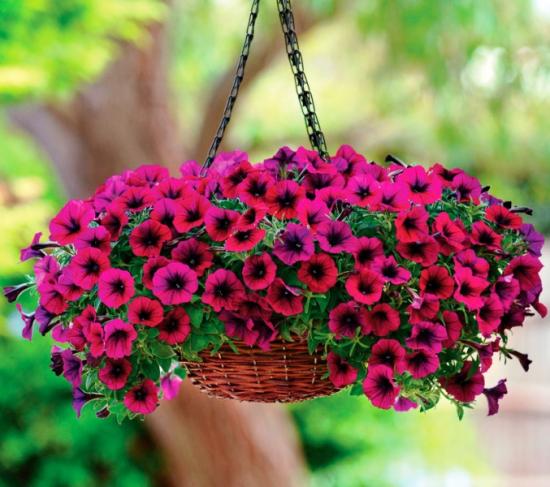
The ampelous branches falling to the ground look quite elegant and attractive. It is not surprising that this species has become so widespread, both in landscape design and among home gardens.
How to grow lush petunia: rules for plant formation
In order for a tiny weak sprout to grow into a full-fledged, strong and lush plant, it is important not only to provide it with the proper growing conditions, but also to pinch it in time.
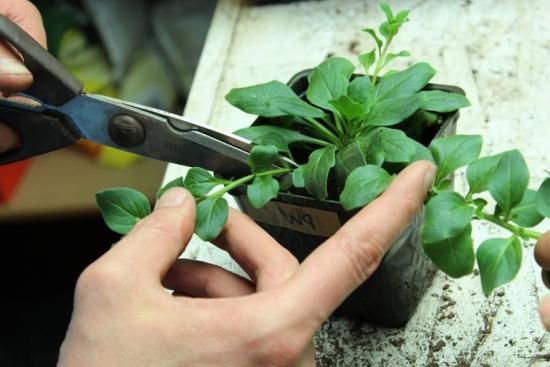
After it is carried out, the remaining part of the stem will become woody and thicker, the leaves will acquire a darker and brighter shade, and the buds will increase in volume. When done in a timely manner, pinching will help to obtain new strong shoots and improve the appearance and condition of the flower.
To carry out the procedure correctly, it is recommended:
- Prepare sharp scissors in advance by disinfecting the instruments. This is especially important since a young plant may suffer from an introduced infection;
- Prepare a container for collecting cut cuttings;
- Pinching is recommended to be done over the fifth or sixth leaf. The event must be carried out with extreme caution so as not to damage the plant or cause irreparable damage to it;
- After pinching at the seedling stage, a second pinching must be done before direct planting in open soil. The second pinching is carried out not only on the central stem, but also on the side branches. This will help activate the growth of third-order shoots, which will visually add splendor to the bush.
After each pinching, it is a good idea to feed the petunia. This will help the flower recover faster from stress and activate growth. Proper and timely pinching will help make not only the bush lush, but also the flowering. However, when pruning you should be careful not to harm the flower.
Pinching is one of the main stages of bush design. This procedure will help improve the appearance of both greenery and buds.
Growing petunia at home is not a complicated process, but it does require some skill and time. If you follow all the rules of care, seedlings can be used not only for landscaping your own plot, but also for sale.

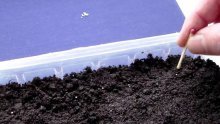

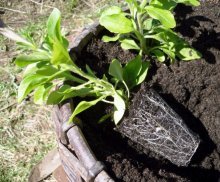
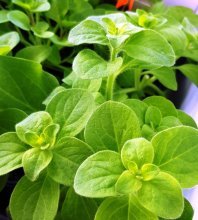
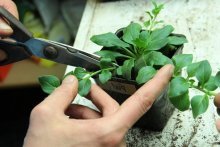
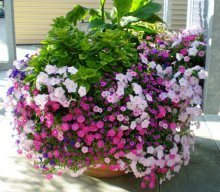
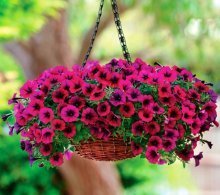

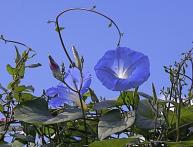
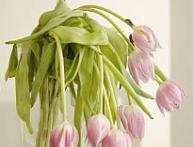
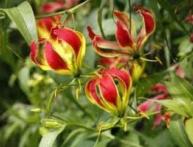
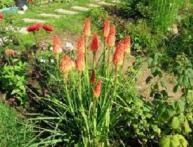

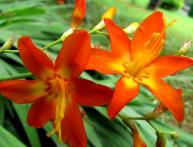
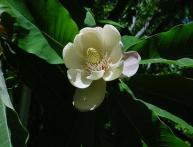
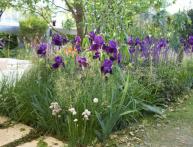
Comments
I plant petunia only in pots and hang them in convenient places. It blooms profusely and is much easier to care for. It's easier for me to plant with seeds. Germination is good. I collect seeds from beautiful varieties and plant them for next year.
Our petunia grows in a large long box on the balcony. We plant it with seeds, we don’t do any picking or pinching of the flower, we just water it with tap water that has settled for at least a day and sometimes fertilize it with liquid fertilizer for indoor flowers. The flowers grow well and bloom profusely.
Well, it’s still better to “move” the granules with a toothpick; everything will stick to your fingers, and the seed will be unknown where it will be. By the way, this year some seeds sprouted in almost two weeks only...